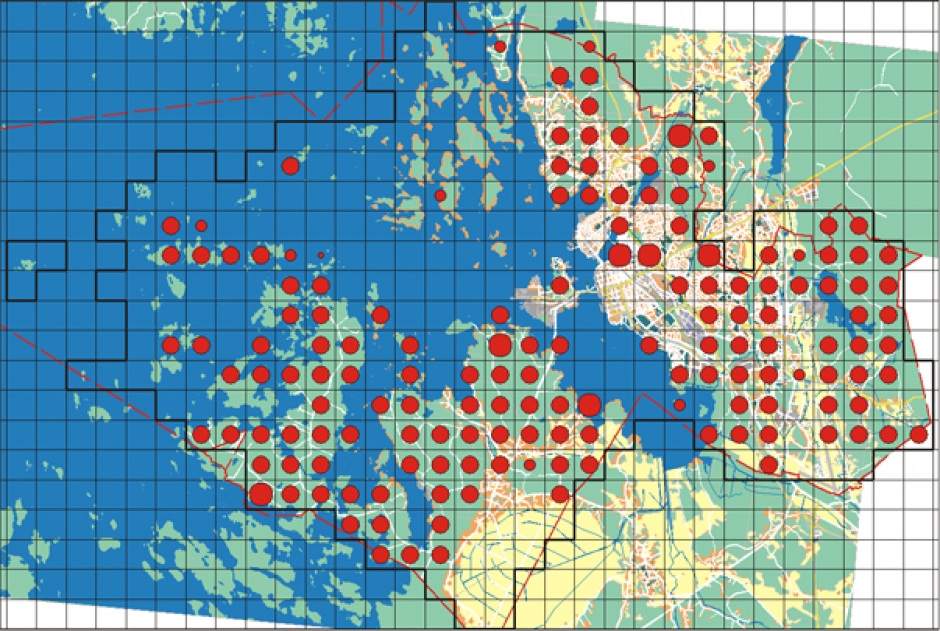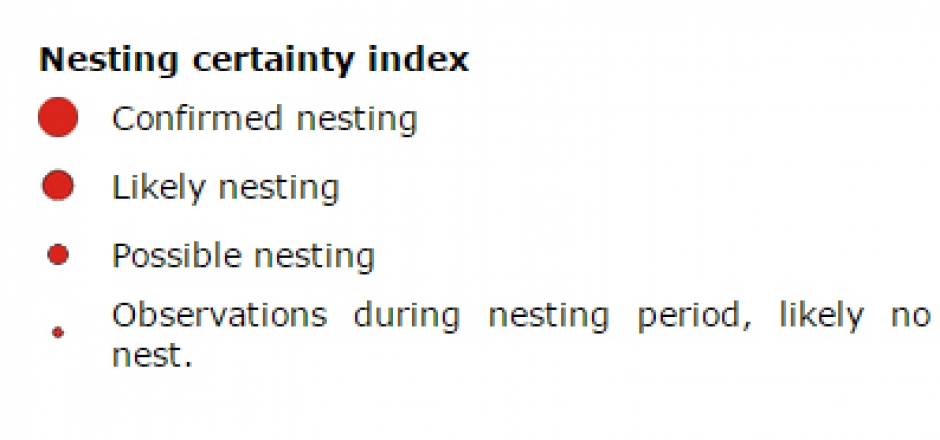Dunnock
Prunella modularis

General information. The dunnock is a woodland species and has increased its population over the last few years. Even though it is a relatively common nesting bird, it is still unknown to most people. It is a small passerine with a grayish brown plumage, which camouflages nicely with the various colors of the forest. It is a wary, often hidden and seldom observed species best recognized by its thin, tinkling song. This is usually performed from the top of a high spruce tree.
- Length 16 cm
- Nests in low bushes or young spruce trees and occasionally on the ground, hidden by undergrowth
- Winters in Central-and southern Europe
- Feeds on insects, seeds and berries
Habitat. The dunnock nests in heathland forests, mixed type forests and spruce plantations. The nest is usually built in a young spruce tree or juniper bush but can also be found built on the ground, under a protective layer of undergrowth. It can be difficult trying to locate the nest. Less than ten nests were found during the survey. Nesting was confirmed mostly by observing flying young.
Distribution in Vaasa. The dunnock was recorded during the survey in April-July in about 150 survey blocks. It nests in woodland areas and is missing from the Gerby archipelago as well as from vast farmlands.


